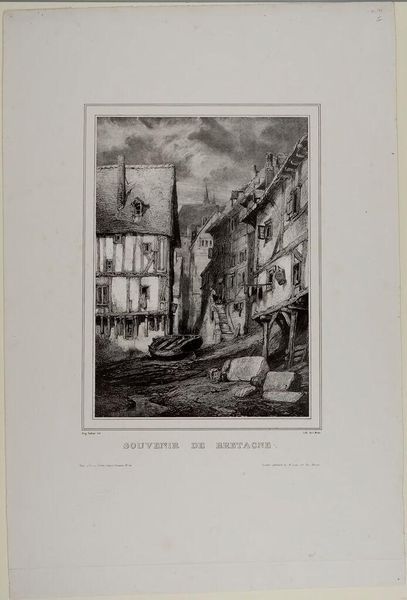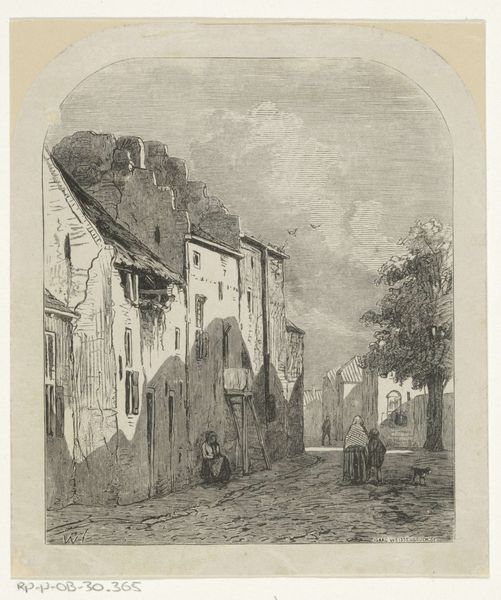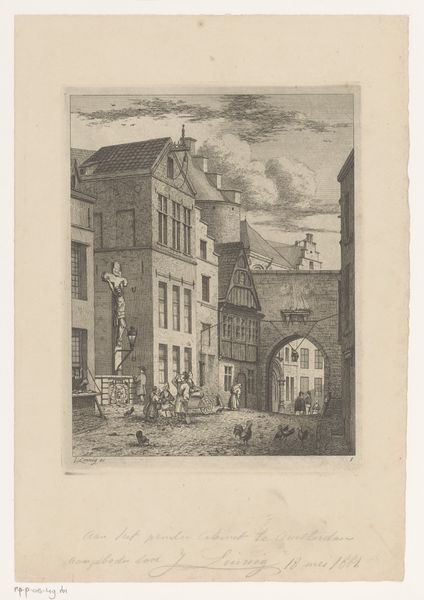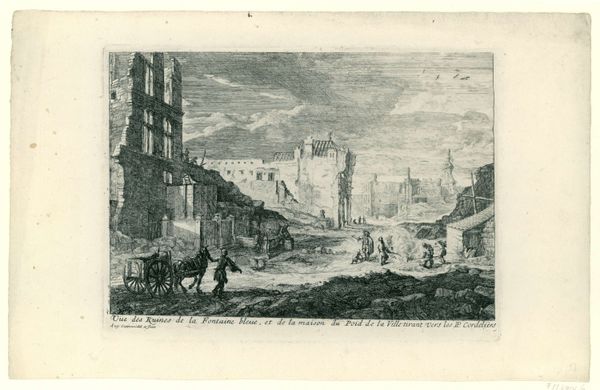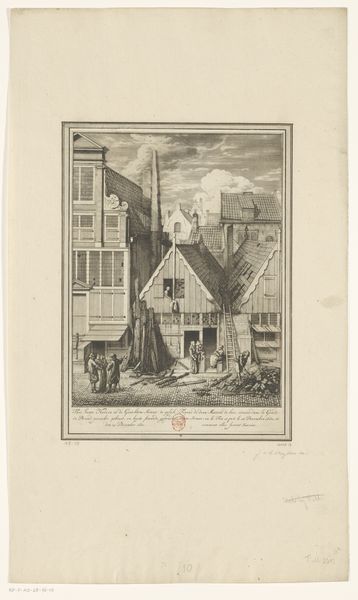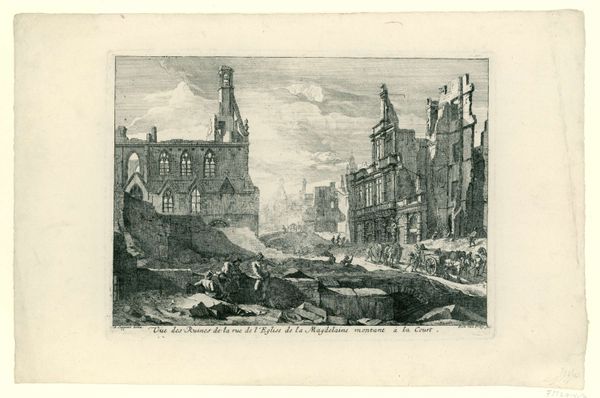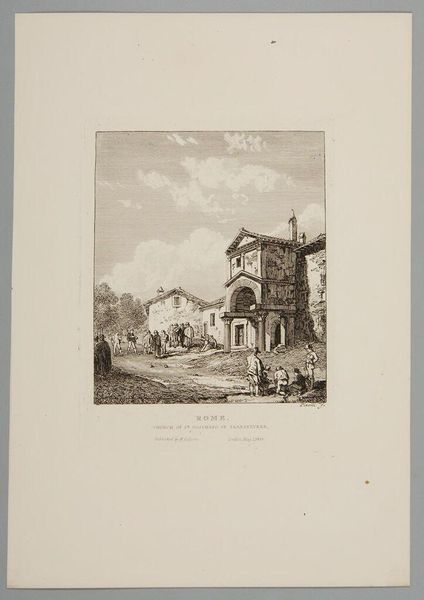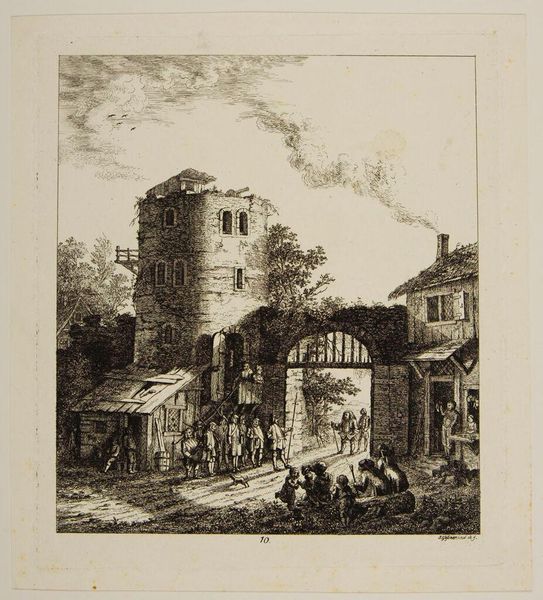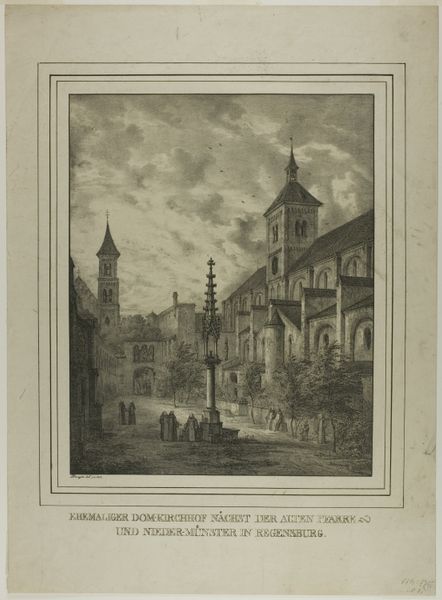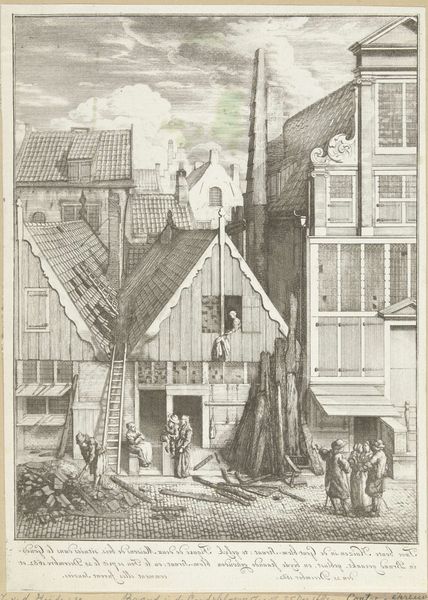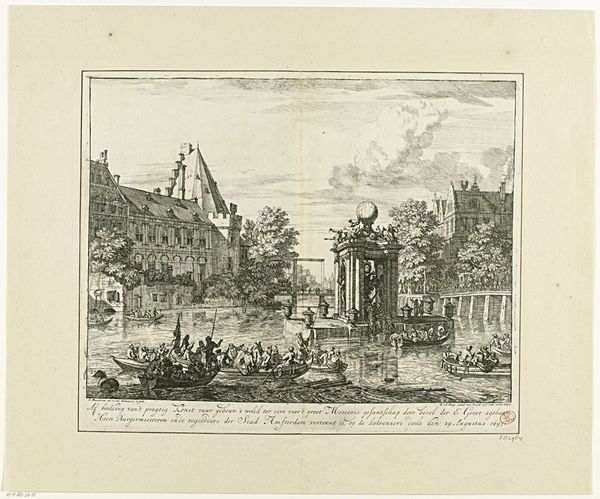
drawing, lithograph, print, etching, paper
#
drawing
#
lithograph
# print
#
etching
#
landscape
#
paper
#
romanticism
#
cityscape
Dimensions: 298 × 218 mm (image); 449 × 332 mm (sheet)
Copyright: Public Domain
Curator: This is "Plate Four, from Souvenir of Brittany," a lithograph etching and drawing created by Eugène Isabey in 1832. Editor: It has a gloomy feeling, doesn't it? The stark black-and-white creates a high-contrast image. The way the buildings are layered, seemingly compressing the scene, is quite claustrophobic. Curator: That atmosphere certainly aligns with the Romantic movement’s interest in the sublime and emotional intensity. Consider how cityscapes in art have often served as powerful symbols of collective identity, history, and perhaps even anxieties related to progress and urbanization. What we see in this work—a somewhat obscured spire further into the composition, figures obscured on staircases, and a general density to the architecture—can carry potent meaning. Editor: The architectural composition itself seems to reject typical orderly grids. It feels organic. The textural quality of the buildings, rendered meticulously through the lithographic process, shows careful layering to suggest a palpable, weathered feel. The sharp, receding lines lead the eye to that distant point that seems almost unreachable, like an inverted perspective drawing the eye out of the image. Curator: The lack of figures might actually heighten the symbolism. It transforms the city into a stage waiting for actors. Perhaps the symbolic significance lies in what's absent, what's yet to be filled in by viewers like us who imbue it with narratives based on shared memories and cultural scripts. Editor: That brings a potent dynamic. So the composition here creates an implied narrative through suggestion rather than exposition. The visual elements alone must carry the emotional weight and convey the essence of the setting. Curator: And that speaks volumes. Images work, and have worked for millennia, as symbolic containers, shaped by psychological and cultural influences that impact both the image's creation and its perception. I’d suggest lingering on it for a time, because what’s first presented isn't always its only truth. Editor: You’re right, after further looking I now see an understated grandeur and dignity—all through this intricate interplay of form and tone, which might take some time to digest.
Comments
No comments
Be the first to comment and join the conversation on the ultimate creative platform.
